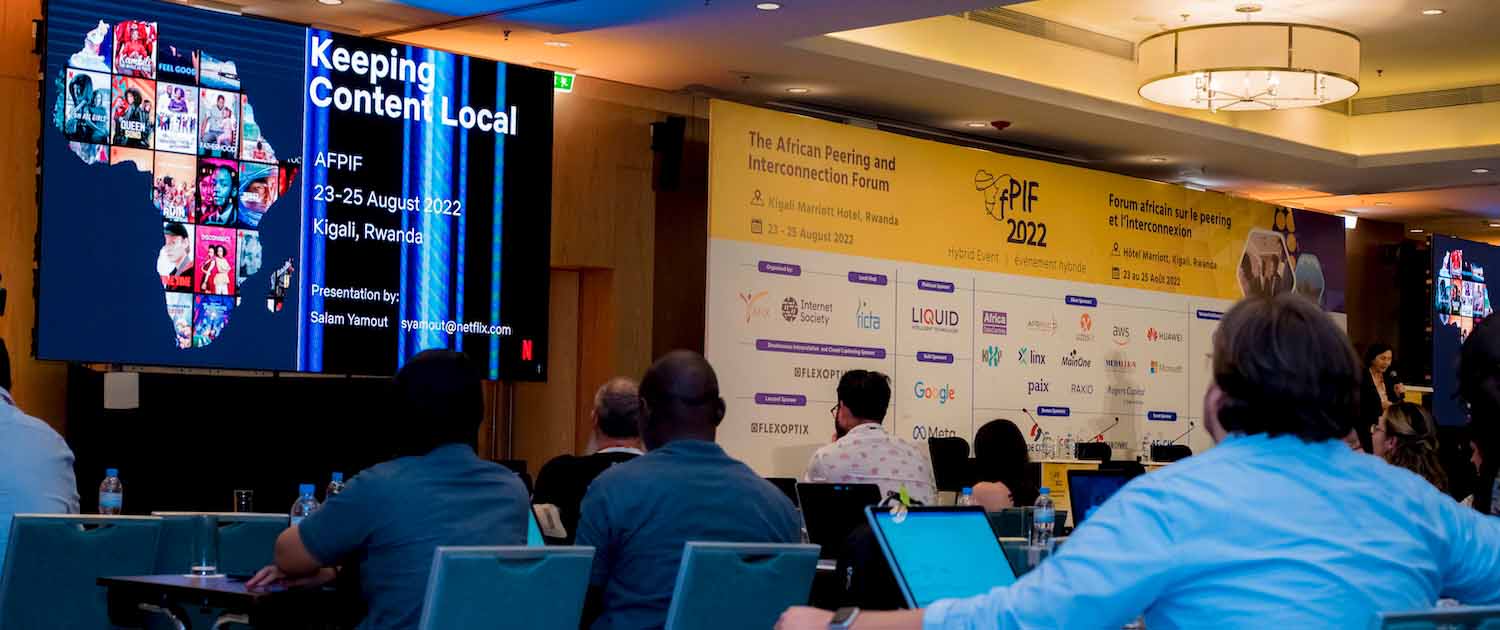The 2024 African Peering & Interconnection Forum (AfPIF 2024) is happening in the Democratic Republic of Congo this week.
AfPIF is an annual conference that promotes the development of national and cross-border interconnection and offers the African technical community a unique opportunity to showcase interconnection challenges and opportunities.
This year has been particularly challenging for network providers in Africa. They have had to deal with two major submarine cable outages that significantly reduced Internet connectivity to dozens of countries.
Read: What Can We Learn From Africa’s Multiple Submarine Cable Outages?
At the same time, these events also highlighted the networking community’s progress to increase its national and regional Internet resilience. A critical component of this can be traced to conferences such as AfPIF, which have helped nurture capacity development and relationships between networks, resulting in greater interconnectivity.
The success of the Internet depends on reliable, efficient, and cost-effective interconnections among networks. Internet Exchange Points (IXPs) play a critical role in developing interconnectivity, especially in countries with less mature Internet markets.
Keeping Traffic Local
Recently, Pulse launched its IXP Tracker to help people monitor and understand the growth and impact of IXPs in their country and region. In light of AfPIF’s location, Table 1 provides a snapshot of this information for the Central African region.
| Country | Number of IXPs | Number of networks peering with IXPs | Total number of networks active in the country | Proportion of the local Internet that can be reached through IXPs in this country |
| Angola | 2 | 25 | 67 | 14.93 % |
| Cameroon | 3 | 16 | 31 | 37.93 % |
| Central African Republic | No data | No data | 3 | No data |
| Chad | 1 | 8 | 18 | 33.33% |
| Democratic Republic of the Congo | 4 | 26 | 51 | 33.33% |
| Republic of Congo | 2 | 9 | 14 | 42.86 % |
| Equatorial Guinea | No data | No data | 7 | No data |
| Gabon | 1 | 7 | 13 | 30.77% |
| São Tomé and Príncipe | No data | No data | 2 | No data |
Table 1 —Most countries in the Central African region have more than two IXPs that collectively enable nearly a third of local traffic to transit via them. Source: Pulse IXP Tracker and Pulse Country Reports.
Note that the more IXPs a country has does not necessarily result in greater interconnectivity. Instead, it’s the percentage of a country’s total networks that peer with these IXPs and the size and type of these networks.
For example, most Internet traffic passes through Internet Service Providers (ISPs), which makes them a primary target to join an IXP. This, however, does not always happen, as large ISPs rely on their connectivity advantage as part of their revenue, so it doesn’t make economic sense to connect to an IXP, most of which are established to allow networks that connect them to peer with one free of charge. Instead, IXPs help smaller networks to compete.
Outside of its peering advantages, IXPs help reduce the journey of a sizable amount of local traffic. Keeping traffic local instead of accessing it from abroad makes the Internet faster and cheaper, as traffic doesn’t need to travel as far or via expensive international transit routes.
While IXPs play an essential role in this process, hosting content closer to end users is an equally important component. This was especially evident during the African submarine cable outages, during which Kenya and South Africa and many of their neighbors experienced fewer disruptions, given that a vast majority of their most popular content is hosted and cached locally.
Figure 1 — South Africa, Kenya, and Algeria host the highest percentage of their most popular websites in the country and are regional hubs for many of their neighbors.
In comparison, countries in Central Africa experienced significant disruptions due to not having this locally stored or cached content. Figure 2 shows that outside Angola, there is a significant dependence on internationally hosted content.
Figure 2 — Angola hosts the highest percentage of its 1,000 most popular websites in-country or in-region.
For further context, Congo’s large percentage of in-region content is hosted in Nigeria, and São Tomé and Príncipe’s and the Democratic Republic of Congo’s in-region content (Figure 3) is hosted in South Africa.
Figure 3 — The largest percentage of the Democratic Republic of Congo’s most popular consumed web content is hosted in France (FR), Germany (DE), and South Africa (ZA).
The Internet Society recognizes hosting local content locally/regionally is a challenge for many regions like central Africa and has recently set itself an ambitious plan to help keep at least half of all Internet traffic in selected economies local by 2025.
Measuring local traffic in a country is a crucial step in achieving this target, which is why the Pulse team, including one of our 2024 Pulse Research Fellows, has been developing a suite of new products like the above charts to measure and display the percentage of each country’s most popular Internet websites stored on servers in the country or abroad.
We look forward to working with the networking and peering communities, including AfPIF, to improve our understanding and resolution of these and other critical Internet resilience indicators. Please share your feedback to help us improve the Pulse website.
Photo by Lewis IHORINDEBA


